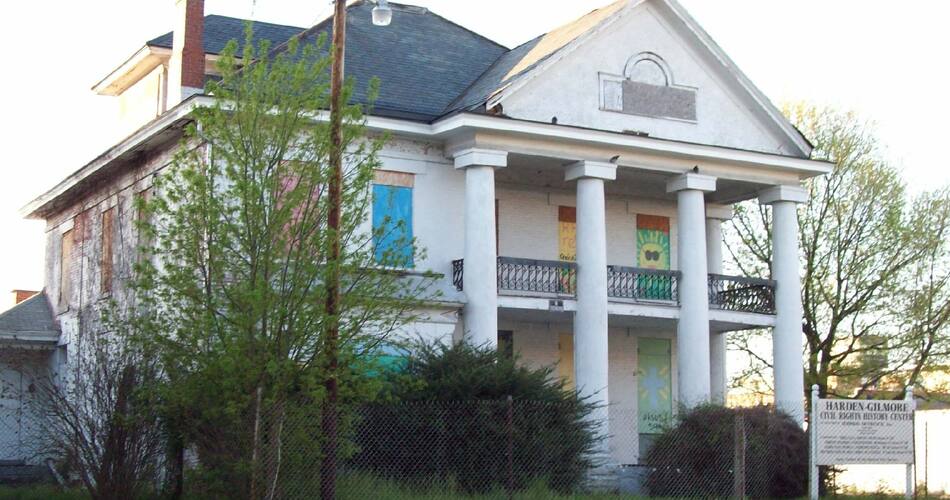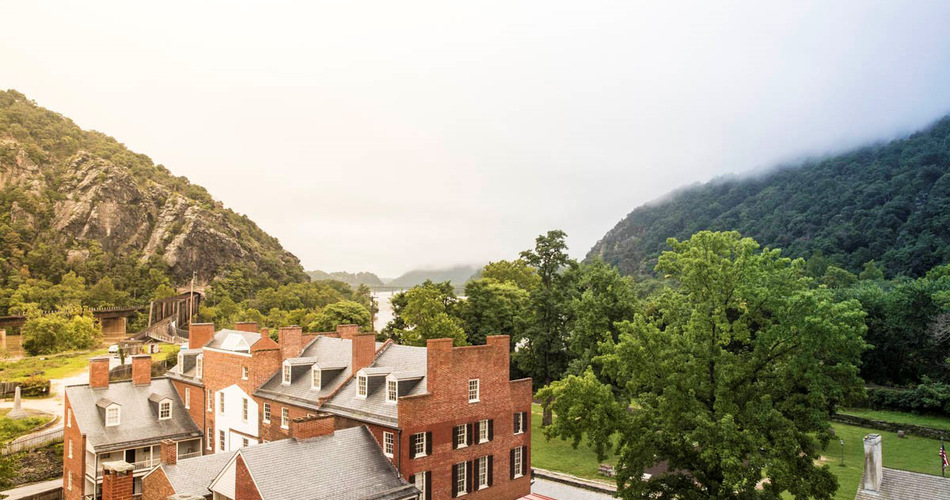The site of a powerful uprising, the home of an influential civil rights leader and more await in West Virginia
Even before it was officially a state, West Virginia was the centerpiece of key events in African American heritage and the civil rights movement. From the 1859 raid on the arsenal at Harpers Ferry by John Brown, which fueled the Civil War, and a celebrated Black college that operated from 1865 to 1955 to Carter G. Woodson, known as the “Father of Black History,” the state is rich in powerful stories of the fight for equality in the United States.
Harpers Ferry National Historical Park
Located at the intersection of the Potomac and Shenandoah rivers in Harpers Ferry, Harpers Ferry National Historical Park was initially planned as a memorial to John Brown, known for his 1859 raid and capture of the federal armory and subsequent failed abolitionist uprising. Brown had hoped he would be able to arm the slaves and lead them against U.S. forces to overthrow slavery. The most important building remaining from the raid is the firehouse, now called John Brown’s Fort, where he resisted the Marines. Another point of interest here is Storer College, a small school started in 1865 with a straightforward mission to provide an education to formerly enslaved men and women. For 25 years, it was the only school in West Virginia where any person of color could get an education beyond the primary level. Many of the former campus’ buildings are still within the national park today. At Harpers Ferry National Historical Park, visitors can take in the extraordinary landscape, walk the charming streets, discover exhibits, and explore hiking trails and historic sites.
Memphis Tennessee Garrison House in West Virginia
A modest, two-story home located in Huntington, the Memphis Tennessee Garrison House was the home of a leading figure in the advance of African American civil rights, Memphis Tennessee Garrison. A teacher, political organizer and influential leader of the local branch of the NAACP, Garrison lived at this home from the 1950s until the 1980s. During those years, she opened her home to many in the community, hosting numerous meetings where leaders of the African American community came together to discuss their challenges and propose solutions. Garrison was the first female of the West Virginia State Teachers Association and vice president of the American Teachers Association, an association of teachers working in segregated schools. The house was listed on the National Register of Historic Places in January 2017.

Elizabeth Harden Gilmore House
Elizabeth Harden Gilmore House
From 1947 until her death in 1986, civil rights leader Elizabeth Harden Gilmore lived and worked in a two-and-a-half-story Classical Revival-style residence in Charleston. Gilmore co-founded Harden-Harden Funeral Home with her first husband and was the first African American woman licensed as a funeral director in West Virginia. She pioneered efforts and civil rights legislation to integrate her state’s schools, housing and public accommodations. In the early 1950s before the Brown v. Board of Education decision mandating school desegregation, Gilmore formed a women’s club which opened Charleston’s first integrated day care center. In 1958, Gilmore was among the first organizers of the Charleston chapter of the Congress of Racial Equality (CORE). With CORE, Gilmore participated in several boycotts and sit-ins challenging racial discrimination.
Top photo: Harpers Ferry National Historical Park
Photos courtesy U.S. Civil Rights Trail
If you’d like to Get More Field Trip Ideas, be sure to Subscribe to Student Travel Planning Guide and Download our Current Issue for FREE






